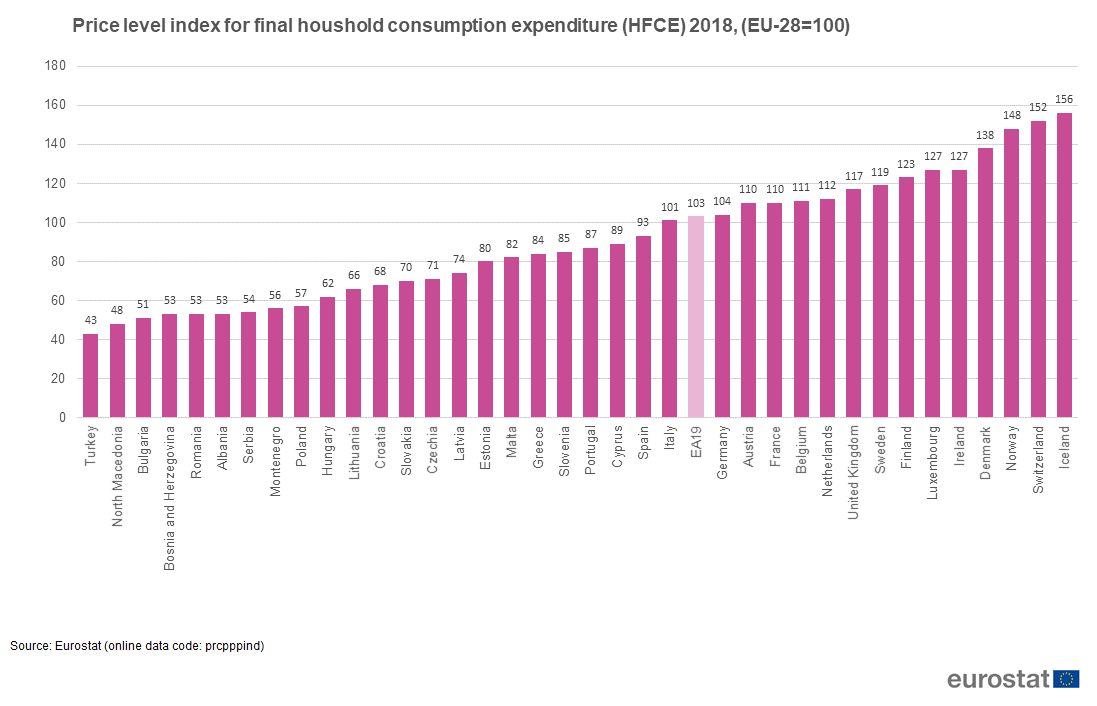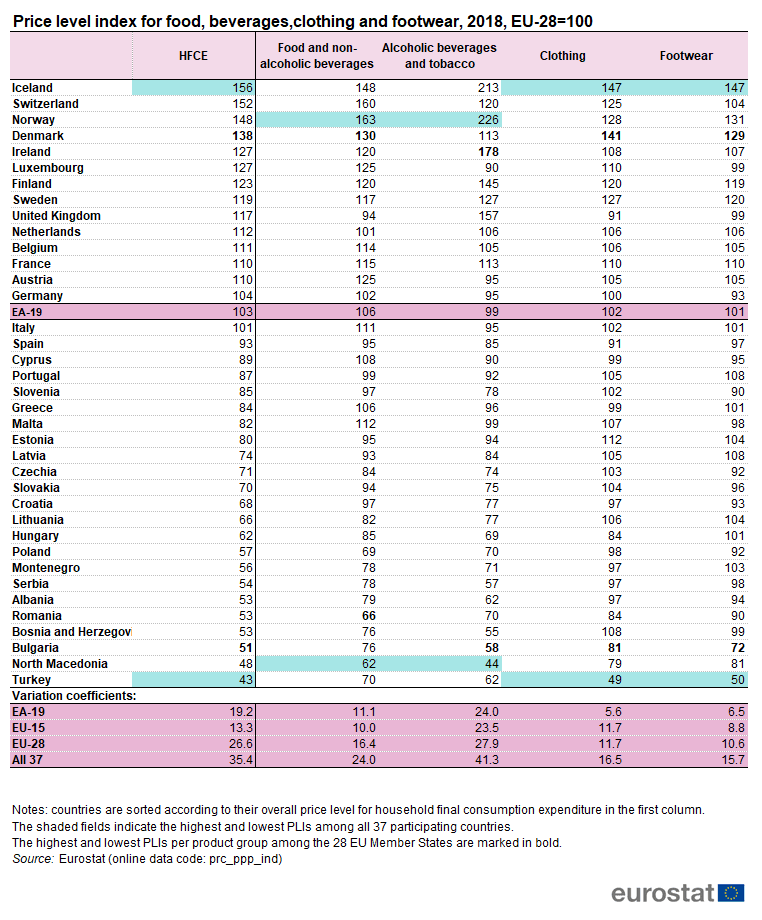29 July 2019 - According to the latest data from Eurostat, the most expensive country in Europe to live in is Iceland, and Montenegro has reached the 30th place.
A recent article by Eurostat presents the most recent analysis of price levels for consumer goods and services in the European Union (EU) as well as EU membership candidates, focusing on price level indices (PLIs), which provide a comparison of countries' price levels relative to the EU average and are calculated using purchasing power parities. The results are based on price surveys covering more than 2000 consumer goods and services which were conducted across 37 European countries participating in the Eurostat-OECD Purchasing Power Parities (PPP) program. The group of participating countries includes the 28 EU Member States, three EFTA countries (Iceland, Norway and Switzerland), five candidate countries (Albania, Montenegro, North Macedonia, Serbia and Turkey) as well as one potential candidate country (Bosnia and Herzegovina).

The Eurostat data shows that in terms of price level indices (PLIs) for total household final consumption expenditure (HFCE) on goods and services in 2018, Iceland and northern European countries tend consistently to have the highest prices, while south-eastern European countries show the lowest prices. Based on the HFCE data, Eurostat formed a list of the most expensive countries to live in, and Iceland, Switzerland and Norway have made it to the top of the list, while Montenegro is ranked 30th.
Further, the data also shows that the price of food and non-alcoholic beverages in Montenegro is relatively low (with price level index 78), as well as the price of alcoholic beverages and tobacco (price level index 71) when compared with other European countries. North Macedonia shows the lowest price level of all 37 countries for food and non-alcoholic beverages (price level index 62) and alcoholic beverages and tobacco (PLI 44).

The data also shows that the prices for clothing and footwear in Montenegro are relatively high, that Montenegrins get lower electricity bills compared to other European countries, and that the prices for household appliances are relatively low. Eurostat also analysed the price level index for personal transport equipment, transport services and restaurants and hotels, finding that the car prices in Montenegro are second lowest among the researched countries, and that the prices of passenger transport by railway, by road, by air, by sea and inland waterway and other purchased transport services (e.g. left luggage services, removal services) are low as well. In terms of restaurants and hotels, Montenegrins enjoy low prices compared to European countries, which is one of the reasons that Montenegro is a popular tourist destination.
Read more about lifestyle in Montenegro at TMN's dedicated page.








